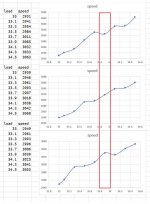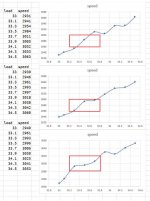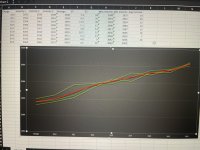I need some help with my load development that I have been doing on my Tikka T3x TAC A1 in 6.5CM. I had previously conducted a ladder-load test to locate my velocity nodes for the rifle, of which the rifle didn't have the it's 6.5mm Precision Armament Hypertap muzzle brake on. Today, I attached the muzzle brake for seating depth testing at the range (100 yards). I started the seating test at the maximum COL that the magazine would allow, which was the same length that my ladder-load test used. Each series of shots during the seating test would increase the seating depth by .003" into the cartridge case, for a total of .036".
Upon conclusion of today's seating depth testing, I feel like the muzzle brake did decrease felt recoil, but at the expense of hurting my group sizes. Prior to ever attaching the brake, this rifle was easily able to bug-hole groups at 100 yards.
A majority of the seating test series were shooting groups .50" - .80". The best group of the whole day measured .20". Overall the characteristics of the groupings without the brake could not be replicated in the groupings with the brake installed. Is this normal?
I do have a suspicion as to a possible influencer of these issues. I did notice, about half way through my test, that my muzzle brake did work itself loose. No baffle strikes though, so that's good! I did use the provided wrenches to tighten it at the range (they are kinda small and crappy. No real leverage). Although the brake didn't become loose again, It still was unable to reproduce the tight groups that I saw without the brake on. SIDE QUESTION: Is there a method of attaching this rifle to a bench vice to support the rifle while I tighten on a muzzle device?
I was hoping someone to offer some advice, besides just taking off the brake. Thanks in advance!
Upon conclusion of today's seating depth testing, I feel like the muzzle brake did decrease felt recoil, but at the expense of hurting my group sizes. Prior to ever attaching the brake, this rifle was easily able to bug-hole groups at 100 yards.
A majority of the seating test series were shooting groups .50" - .80". The best group of the whole day measured .20". Overall the characteristics of the groupings without the brake could not be replicated in the groupings with the brake installed. Is this normal?
I do have a suspicion as to a possible influencer of these issues. I did notice, about half way through my test, that my muzzle brake did work itself loose. No baffle strikes though, so that's good! I did use the provided wrenches to tighten it at the range (they are kinda small and crappy. No real leverage). Although the brake didn't become loose again, It still was unable to reproduce the tight groups that I saw without the brake on. SIDE QUESTION: Is there a method of attaching this rifle to a bench vice to support the rifle while I tighten on a muzzle device?
I was hoping someone to offer some advice, besides just taking off the brake. Thanks in advance!




